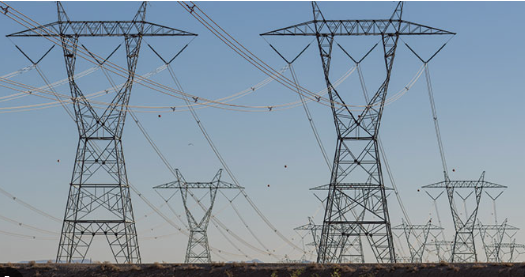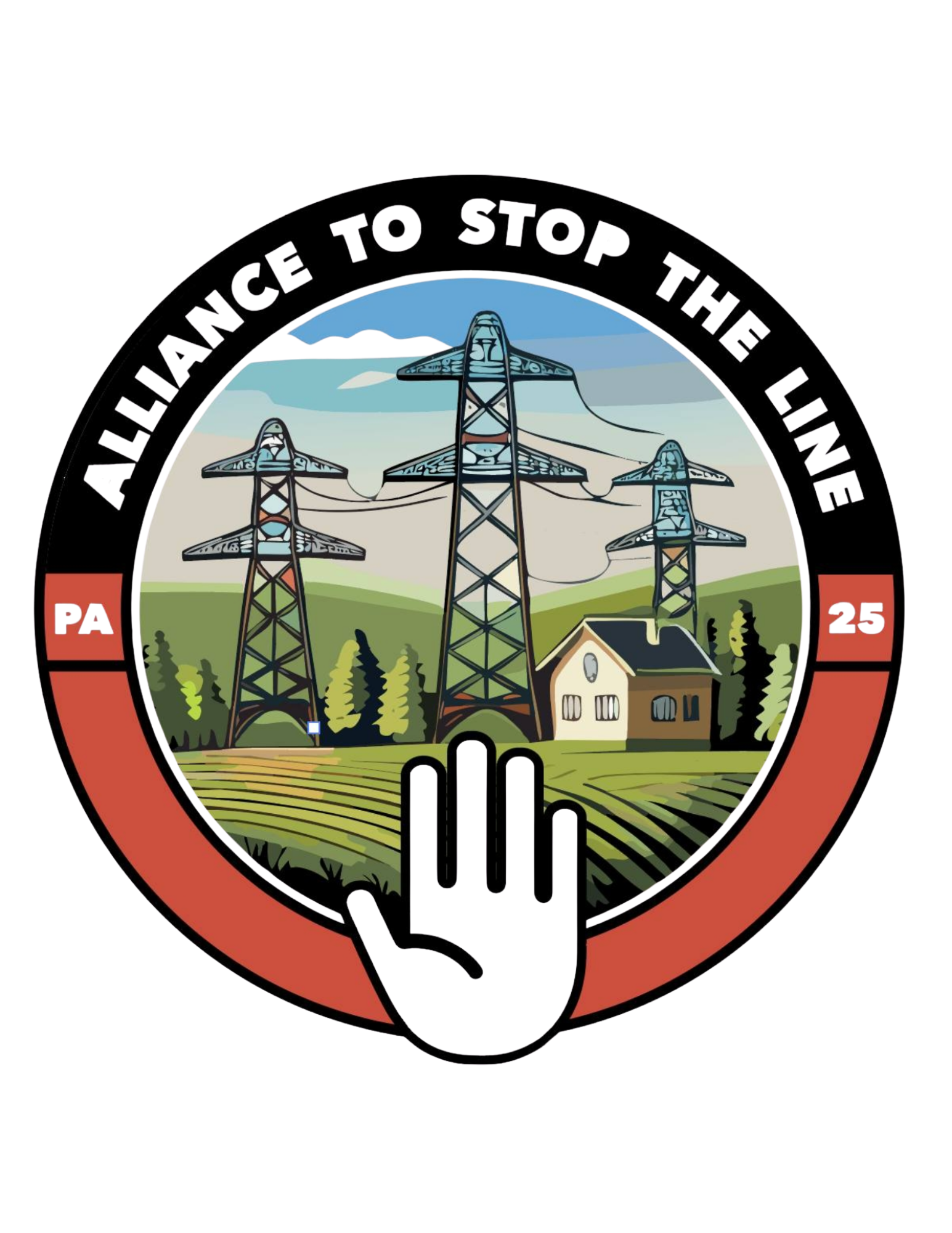We need your support, and there are several ways you can help!
One of the easiest ways to help is to sign our petition to Stop the Line.
After you submit, please copy and share the link through email or social media platforms.
The more signatures, the greater the impact!
Share the link:
https://form.jotform.com/250256709393159?fbclid=IwY2xjawLJL8tleHRuA2FlbQIxMABicmlkETFMa05DSjVmYkJxTEFuWkcxAR7hftPaa7wcxETUP2CI6r28rbXzXUiO2A5nIdANRVSOeAHd9FTvYY6NxI-L2Q_aem_1eo3z83RpzGsrbcNzZytTA

Write to your community, county, and state legislators, and tell them how important it is for PPL to reconsider the route of the 500kV transmission line through the Sugarloaf Valley.
Call your school district, county council, and township supervisors to tell them that you oppose any tax-abatement deals with data centers. Tax abatements, or LERTAs, encourage businesses to move into an area - at substantially reduced or zero taxes. The tax burden is on the residents.
To be clear: When big business gets a tax abatement, YOU - the taxpayer - bears the burden in increased taxes.
July 6, 2025
We are residents of Sugarloaf Township and neighboring Luzerne County communities—rural Pennsylvania areas with deep roots, clean water, and a strong sense of place. Today, our future is under threat.
PPL Electric Utilities is proposing a 12-mile, 500kV transmission line that may serve five data centers—yet won’t disclose who they’re for, who benefits, or whether the power even stays local. What’s certain: our communities bear the cost.
We face serious environmental, health, and economic impacts, including:
Increased risk of cancer, miscarriage, and childhood leukemia from EMF exposure near homes and schools.
Strained aquifers and potential PFAS contamination from data center water use.
Potential decrease in property values.
Although residents have raised these concerns through packed public meetings and testimony, we feel PPL has not responded adequately.
We’re asking for your guidance, support, and partnership. Specifically:
Advice and insight: Based on your experience, what strategies have worked in similar fights?
Legal and technical support: We seek help enforcing a full Environmental Impact Study and regulatory compliance.
Amplification: We’d welcome media partnerships to elevate local voices and pressure decision-makers.
A brief call or meeting: To explore how we can work together.
This is a David vs. Goliath moment. We are not against progress—we are against recklessness. We need experienced allies to help us navigate this fight for health, safety, and environmental justice. We would be happy to provide a detailed explanation of the project, and how properties and families are negatively affected
Please visit our campaign site for more background and documentation:
www.alliancetostoptheline.org
facebook.com/alliancetostoptheline
@alliancetostoptheline
Thank you for your work, and for considering this request from a community that’s fighting to be heard. We look forward to connecting.
Sincerely,
John Zola
570-436-3089
Founder of Alliance To Stop The Line
June, 2025
Dear Legislator,
This letter is written on behalf of concerned residents in Luzerne County who are facing an urgent and deeply troubling situation. A proposed utility project by PPL stands to permanently alter the character, safety, and livability of one of the most cherished regions in northeastern Pennsylvania. We are not opposed to necessary infrastructure—but the current plan prioritizes expediency over responsibility and puts our homes, families, and environment at serious risk. We are asking for your leadership in ensuring that smarter, community-conscious alternatives are considered.
PPL is proposing a 12-mile-long 500kV transmission line from the Susquehanna Nuclear Power Plant to the Humboldt Industrial Area, known as the Sugarloaf Transmission Project. The line, along with a 200-foot-wide service road, would cut directly through the most pristine and picturesque part of the Nescopeck/Sugarloaf Valley. PPL already operates a 230kV transmission line through the Sugarloaf Valley and is now working to obtain new rights-of-way in Black Creek Township. If this project moves forward, the region would ultimately contain three separate transmission lines—one to the east, one central, and one to the west—completely devastating the last untouched gem this area has to offer.
To make matters worse, PPL is proposing to use a right-of-way originally established in the early 1900s, when the area was mostly open farmland with very few homes. That reality no longer exists. Today, the land targeted for this transmission line is densely populated with homes and families. A narrow, century-old right-of-way through what was once a rural area does not justify the construction of a massive 500kV transmission line—but that is exactly what PPL is attempting to do.
PPL does not currently have a wide enough right-of-way to accommodate this project. They are now approaching individual landowners, seeking to expand the easements to 200 feet—placing them, in some cases, within just 90 feet of people’s homes.
These expansions would introduce towering 240-foot-tall industrial utility poles into residential neighborhoods—looming over front yards, side yards, and backyards. People’s lives, health, property values, privacy, and their right to quiet enjoyment would be permanently jeopardized—just to name a few of the consequences.
Residents would be forced to live with constant noise from humming high-voltage lines, increased exposure to static electricity, and the visual blight of massive poles outside their windows. Outdoor spaces like pools, basketball courts, and family play areas would be directly impacted. Toxic herbicides used to maintain the right-of-way would put children, grandchildren, pets, and the environment at serious risk.
This project is not a necessity—it is a decision driven by cost and convenience at the expense of the community. But there is a better way.
Viable Alternatives Exist
We are proposing several immediate, reasonable alternatives—any one of which could meet PPL’s infrastructure goals on its own without destroying homes and neighborhoods in the process. These are individual options, not a sequence or combined solution:
Option 1: Refurbish the existing 230kV line to support 500kV capacity
Option 2: Maintain the existing 230kV line and build a parallel 500kV line within the same corridor
Option 3: Refurbish the existing 230kV line to support 500kV and parallel it with a new 500kV line, creating a long-term solution that meets future energy needs responsibly

